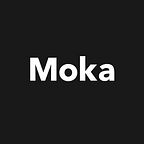Dark mode or Light mode, is that the question?
Dark mode is one of the latest design trends that are here to stay. Even though people love reading light text on a dark background now, it’s not new. Today we know as ‘dark mode’ what used to be the standard back in the 60s, 70s, and early 80s.
Back in the day, computers worked with electron beams, and the light coming from them was really dim. The arrival of CRT monitors that could emit brighter lights and more colors and the advent of GUIs (Graphic User Interphase) introduced light mode, which is what we use today.
So what led us to go vintage? And why did we embraced light mode, to begin with?
Light vs. Dark
Light mode is the most natural way to read or use a device. We, humans, have historically been diurnal creatures. 200,000 years ago, we hunted, gathered, and planted by daytime. This lead to the preference of reading dark texts on light backgrounds.
According to research from Cosima Piepenbrock and S. Mayr, A. Buchner in 2013, they explain that using a light-themed interface in the daytime is easier on the eyes of normal-vision people (20–20 vision or wearing prescribed glasses/contacts,) at least in the short-term. But, prolonged exposure to bright interfaces affects people who have myopia or nearsightedness, as researched by A. Aleman, M. Wang, and F. Schaeffel in 2018.
Dark mode is having a revival sort of phase. Reading white text on a dark background dramatically reduces the amount of light that your eyes receive, helping people to improve reading, even more during nighttime.
However, keep in mind that this mode isn’t great to use during the day. Receiving less light during the day makes it harder for your eyes to decipher the information in front of you. Your pupils have to dilate and force read due to poor contrast between text and background. This is a frequent symptom for people with Astigmatism by the way.
Dark mode saves battery
Physical limitations aside, a technological advantage of Dark mode is battery improvement. If you’re using a phone with an OLED screen, the screen turns off in places with pitch dark colors. This smart screen, that’s present in most high-end phones, is deemed to decrease battery usage by at least 10%.
We can even say this has a small, yet positive effect on the environment as well.
Light mode on our website
Our latest version of the website was conceived and consciously designed in Dark mode, transmitting an elegant and sleek look and feel, which we love! But after our launch, we observed visitor’s behaviors and metrics and decided to incorporate the light mode from previous versions, due to several reasons.
Aesthetics
Of course, one big reason was purely visual. While we love the looks of our dark Moka.tv website, having a Light mode alternative gives us more creative possibilities! This new iteration provided more breathing room to the content and a much fresher look.
We love seeing the differences and the small touches we gave to the transition of modes.
Usability
Following what was said above, we made a Light mode to go easy on everybody’s eyes. Readability is a massive priority for us and so it is making our content accessible to visually-impaired people. Even though our site is still not 100% accessible to people with all kinds of disabilities, we’re getting there.
Empowerment
Even after all our reasons concerning health, battery savings, and more, we felt using a Light or Dark mode is entirely up to the person.
Both have some advantages and drawbacks, but the true value resides in allowing people who use your product to make a choice. That is what we call true empowerment.
In the end
Should you add different modes to your product? Well, we can say that making it more accessible, saving battery life, among other benefits, can broaden the spectrum of your design. Those look like wins for us.
Do you think it’s just a design fad or have you witnessed the benefits of using one or the other?
Still not convinced? Read the articles we based our thoughts on:
This article was originally written by Flavio Ruiz, Content Manager, and Joel Colombo, Creative Director. We both work at Moka, the company that always infers the best from their coworkers. Check out our website or hang out with us on Instagram.
